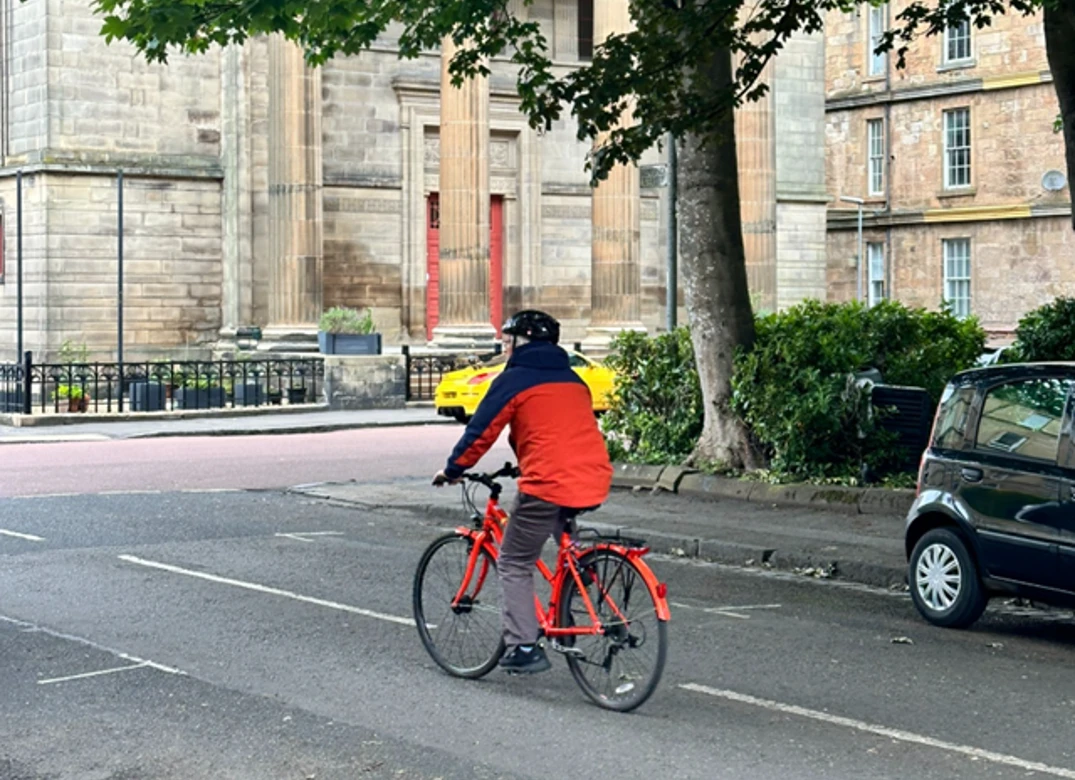Vision impairment can often be a barrier to people being more active – a new training pilot set out to change that.
Cycling Scotland recently partnered with Visibility Scotland and Bike for Good to pilot cycle training for adults, specifically tailored to support stroke survivors with homonymous hemianopia.
Often caused by a brain injury or stroke, people with this condition have visual field loss of either the left or right side, resulting in reduced vision on that side of their visual space.
Visibility Scotland is a charity that provides advice and practical support to help improve the lives of people with vision impairments across Scotland, including helping people to remain active and regain their independence. The charity has had lots of success with walking activities but hadn’t trialled using bikes before.

Tailoring the training
The three participants in the first pilot cycle training session had already been taught visual scanning techniques by Alister Lees, Assistant Neurological Vision Rehabilitation Specialist at Visibility Scotland. The staff and Cycling Scotland tutors supporting the session were keen to see how well these same techniques could be applied to cycling activities and the results were really positive.
Initially there were some nerves as participants had not been on bikes for a while. Because of this, the two tutors, Josh and Nina, used a progressive, steady approach to restore the participants’ confidence in riding their bikes. They started with bike, helmet and clothing checks before moving onto balance and control activities in a traffic-free area. The group progressed quickly with a led ride through a local park giving a chance to focus on using scanning techniques, which worked well.
I’d forgotten just how much fun biking could be – just because you’re vision impaired it doesn’t mean you can’t do it, you’ve just got to find confidence and get out there!
For the final part of the session, the group moved onto some quiet roads to practice cycling with other people on the road.
Making good observations is vital for anyone riding their bike. However, for someone with homonymous hemianopia, it’s even more important. Their learned scanning techniques are necessary for them to see all other road users and make the right decisions in traffic on the roads and when sharing space with other users in traffic-free areas too.
Alister and Laura Walker, CEO of Visibility Scotland, provided more information to the participants about using their scanning techniques when cycling. Combined with Josh and Nina’s expertise about on-road cycling, the participants were able to practise riding on the roads. With particular emphasis on making good observations, riding in control, positioning themselves correctly on the roads, communicating with other road users and knowing who has priority, they were able to make decisions with limited support by the end of the session.
At the end of the session, one participant said: “I’d forgotten just how much fun biking could be – just because you’re vision impaired it doesn’t mean you can’t do it, you’ve just got to find confidence and get out there!”
--
Cycling Scotland will continue to work in collaboration with Visibility Scotland to support more people to get back on their bikes and build their confidence.

